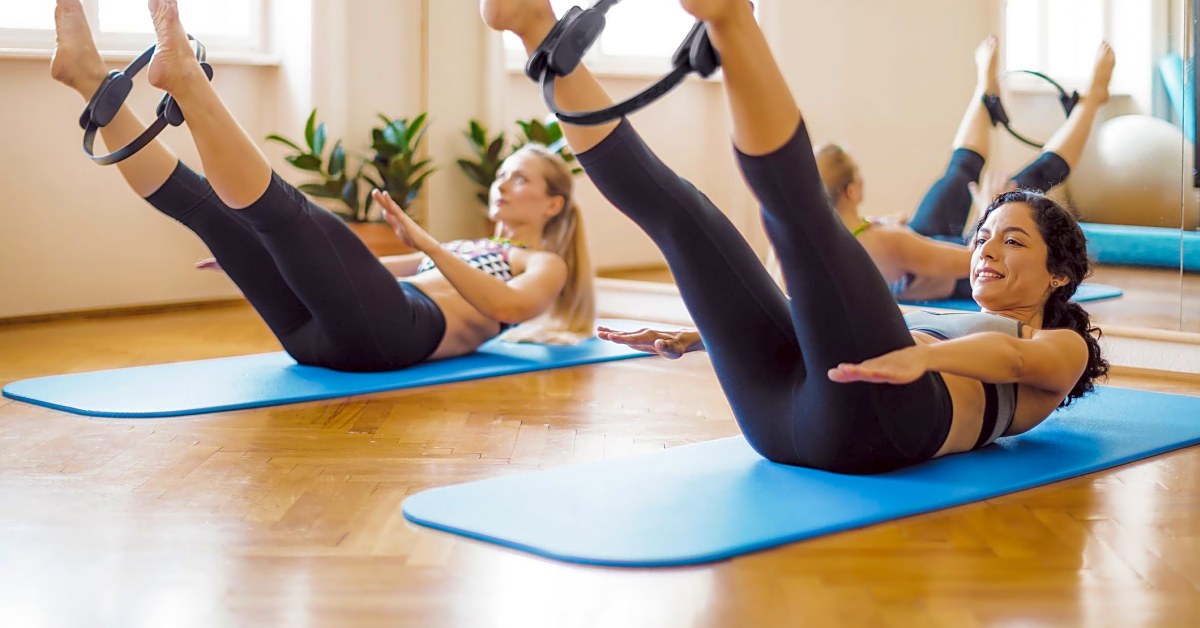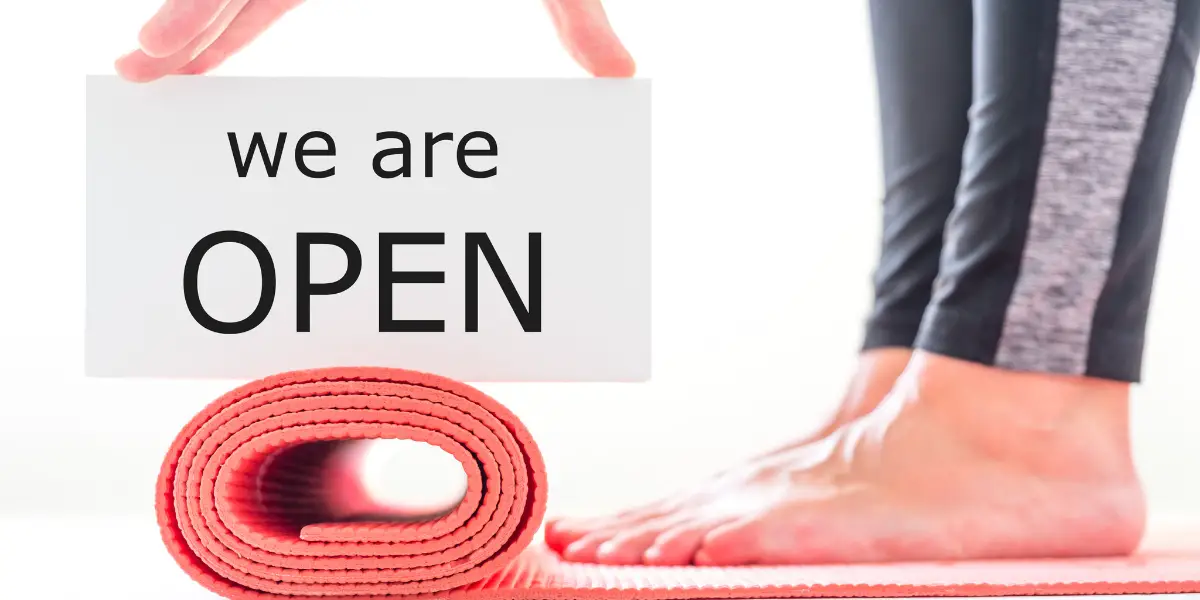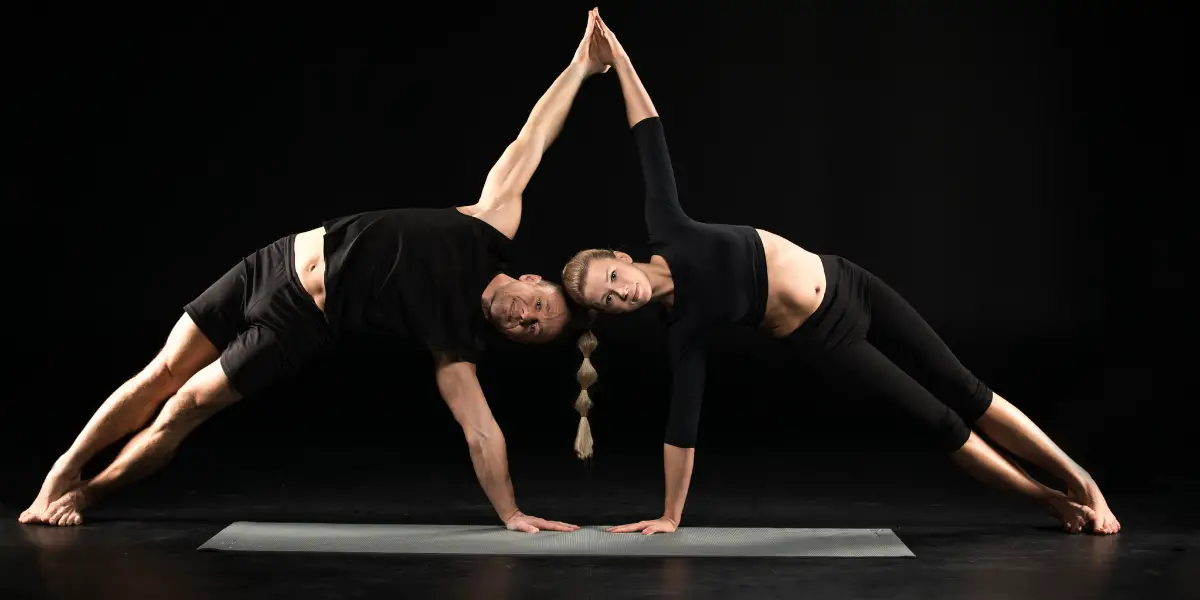Pilates workouts promote strength, balanced muscle development, flexibility and a greater range of motion for the joints. Developed in the early 20th century by Joseph Pilates, the exercises coordinate movement and breathing to train the smaller and deeper stabilising muscles of the body as well as the major muscles. By focusing on breathing, Pilates improves cardiorespiratory capacity (11, 1), which stimulates feel-good hormones, oxygen flow and blood circulation. Pilates is a mind-body practice that improves proprioception or body awareness (13, 1). Paying attention inward and being able to focus on the sensations in your body increases your awareness of well-being or pain, your feelings and your surroundings.
In addition to the benefit of body awareness, the inward attention and use of breath in Pilates can down-regulate the nervous system. This in turn can get you out of fight-or-flight mode, lower cortisol levels and reduce stress over time (16, 1). A Pilates exercise keeps you moving with smooth transitions between precise and slow, controlled movements. Rather than stretching after a strengthening exercise, most Pilates exercises are a combination of both, which improves strength, flexibility and range of motion (20, 21, 22, 2.Pilates improves balance and gait not only by strengthening the core, but also by focusing on alignment and whole-body exercises (21, 22, 2.Research shows that Pilates strengthens immune system function, especially in older adults (24, 25, 2). Various markers have been studied, such as the development of new neurons, blood flow to the brain, increase in neurotransmitters and longevity of neurons responsible for learning, memory and executive thinking (29, 30, 3).In one study, Pilates was found to improve not only cognitive skills, but also motivation in students (2). Another study examined the type of motivation that drives Pilates practitioners and found that Pilates practitioners are driven by intrinsic motivation rather than external affirmation (3). In addition, Pilates is an effective way to improve pelvic floor strength and function, and a strong pelvic floor correlates with increased sexual pleasure (34, 3.Studies of athletes in various sports show improved speed, increases in muscle mass and core strength, a more stable trunk, improved vertical jump, and better flexibility when kicking (36, 37, 38, 39, 40, 41, 4.Studies have shown that Pilates improves quality of life, relieves pain, and increases bone density.
Studies suggest that Pilates can lead to better sleep, especially in people under 40 (46, 47, 2.One study found that postpartum women benefit from better sleep when they include Pilates in their weekly routine (4.Pilates is a full-body workout that offers numerous benefits, from injury prevention to improved flexibility to a better sex life. The benefits overlap and are the result of the influence and connection of the whole body. Specific prenatal Pilates exercises can help manage diastasis recti (the separation of the abdominal muscles that is common in pregnancy) and its recovery after birth. Prenatal Pilates can prepare you mentally and physically for labour and birth by focusing on breathing, body awareness and strengthening.
Pilates has tremendous benefits and is suitable for everyone, regardless of fitness level, age, size or other factors. Pilates (or the Pilates Method) is a series of about 500 exercises inspired by calisthenics, yoga and ballet. Pilates stretches and lengthens all the major muscle groups of the body in a balanced way. It improves flexibility, strength, balance and body awareness.
Yoga brings body and mind together and is built on three main elements – movement, breathing and meditation. Both yoga and Pilates improve muscles and posture. Always seek advice from your doctor before starting a new fitness programme, especially if you have a pre-existing condition or have not exercised for a long time. So how does it work? Pilates focuses on lengthening and stretching muscles rather than cramping them.
This makes them longer and leaner,” says Mahal. Pilates exercises are dynamic stretches, i.e. active movements. The beach is my happy place, and here are 3 scientifically proven reasons why it should be yours too. Regular Pilates can improve posture, muscle tone, balance and joint mobility, as well as relieve stress and tension.
If you overdo it with Pilates, especially if it’ s your first time, you can overwork your muscles, especially if you don’t give them enough time to recover before the next class. Depending on the exercise, Pilates routines can be done on specially designed equipment, such as a bed-like structure called a reformer, or on a mat or blanket. Various studies show that exercise can have a positive impact on mental health, and for me Pilates is no exception. Working on the mat can involve traditional Pilates equipment such as magic circles (Pilates rings) or hand weights, as well as non-Pilates equipment such as stretch bands, exercise balls and foam rollers.
If you want to strengthen your abdomen and pelvis and maintain good posture, Pilates is for you. Due to the structure of the reformer, the shoulder pads, the straps and the foot bar, it is easier to stabilise and align the body than with free Pilates training on a mat. The Pilates repertoire, which includes exercises on the mat and on special equipment, consists of over 600 exercises and variations. There is even a case study where a patient with back pain saw 50 specialists only to find that Pilates helped her cure her back pain.
If you feel more comfortable trying a new exercise method in the comfort of your own home rather than acclimatising to a public class, you can start Pilates virtually. There is some evidence that Pilates can provide relief for people with non-specific lower back pain. However, studies specifically examining the mood-boosting effects of Pilates found that subjects experienced reductions in anxiety, fatigue and depressive symptoms, as well as relief from negative thought patterns (45, 2.) After just a few weeks of Pilates, I noticed improvements in my performance of other exercises at the gym. Both forms of exercise are about balancing muscle groups and working the core, but in Pilates the emphasis is much more on the exercises that work that core, according to the bar.




